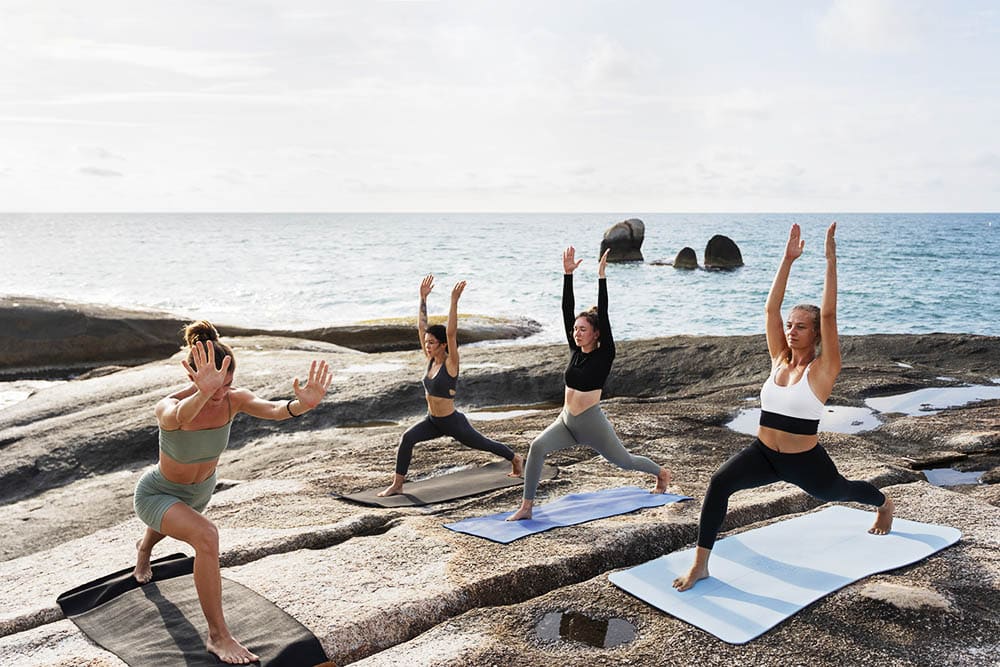Understanding the Importance of Stability Exercises
Older adults are susceptible to tripping and losing their balance, which can lead to falls, fractures, and other serious injuries. To reduce the risk of falls, it is crucial to engage in stability exercises that improve strength, balance, coordination, and flexibility. These exercises can provide a range of benefits that help maintain your independence and enhance your quality of life.
As you age, your body undergoes multiple changes that affect your stability, including loss of muscle mass, reduction in bone density, and decreased flexibility. However, with the right exercises, you can counteract these changes and maintain your physical health, agility, and balance.
Top Exercises for Enhancing Stability and Preventing Falls
1. Tai Chi
Tai Chi is a popular form of exercise that is great for enhancing stability and preventing falls. Tai Chi movements involve slow, deliberate, and fluid motions that challenge your balance and coordination. This exercise also helps improve flexibility, muscle strength, and joint mobility, which are essential for maintaining good balance. Tai Chi is a low-impact exercise that comes with minimal risks of injury and can be performed by people of all ages and fitness levels.
2. Single-Leg Stands
As the name implies, the single-leg stand involves standing on one leg for a specified amount of time. This exercise helps improve overall balance and stability by strengthening your ankles, knees, and hip muscles. If you are new to this exercise, start by holding onto a sturdy object like a chair or wall for support and gradually work your way up to standing unassisted. Aim for holding each leg for up to one minute.
3. Heel Raises
Heel raises are an effective exercise for strengthening the muscles in your calves and ankles, which are crucial for maintaining good balance. Start by standing with your feet hip-width apart and slowly raise your heels off the ground, then lower them back down. Repeat this motion for 10 to 15 repetitions and gradually increase the number of repetitions as you get stronger.
4. Side Leg Raises
The side leg raise exercise targets the muscles in your hips and thighs, which are essential for maintaining good balance and stability. Start by holding onto a chair for support and lift one leg out to the side, then lower it back down. Aim for 10 to 15 repetitions on each leg and gradually increase the number of repetitions as you get stronger.
5. Wall Push-Ups
Wall push-ups are a beneficial exercise for strengthening your chest, shoulders, and arms, which play a vital role in maintaining your overall balance and stability. Start by standing facing a wall, with your palms flat against the wall and elbows bent. Slowly push yourself away from the wall by extending your arms, then lower yourself back down. Aim for 10 to 15 repetitions and gradually increase the number of repetitions as you get stronger.
Tips for Implementing Stability Exercises into Your Routine
– Start slow and gradually increase the intensity of your exercises over time.
– Try to include a variety of stability exercises in your routine to target different muscle groups.
– Aim to exercise at least three times a week for optimal results.
– Wear appropriate clothing and footwear that allows for safe and comfortable movement.
– Always warm-up before exercising to reduce the risk of injury.
– Listen to your body and avoid pushing yourself beyond your limits.
The Bottom Line
Engaging in stability exercises is an effective way to prevent falls and enhance your overall physical health, agility, and balance. By incorporating the exercises mentioned above into your regular routine, you can strengthen your muscles, improve your coordination, and reduce the risk of falls. Remember to start slow, listen to your body, and gradually increase the intensity and frequency of your exercises for maximum benefits.

Deja una respuesta